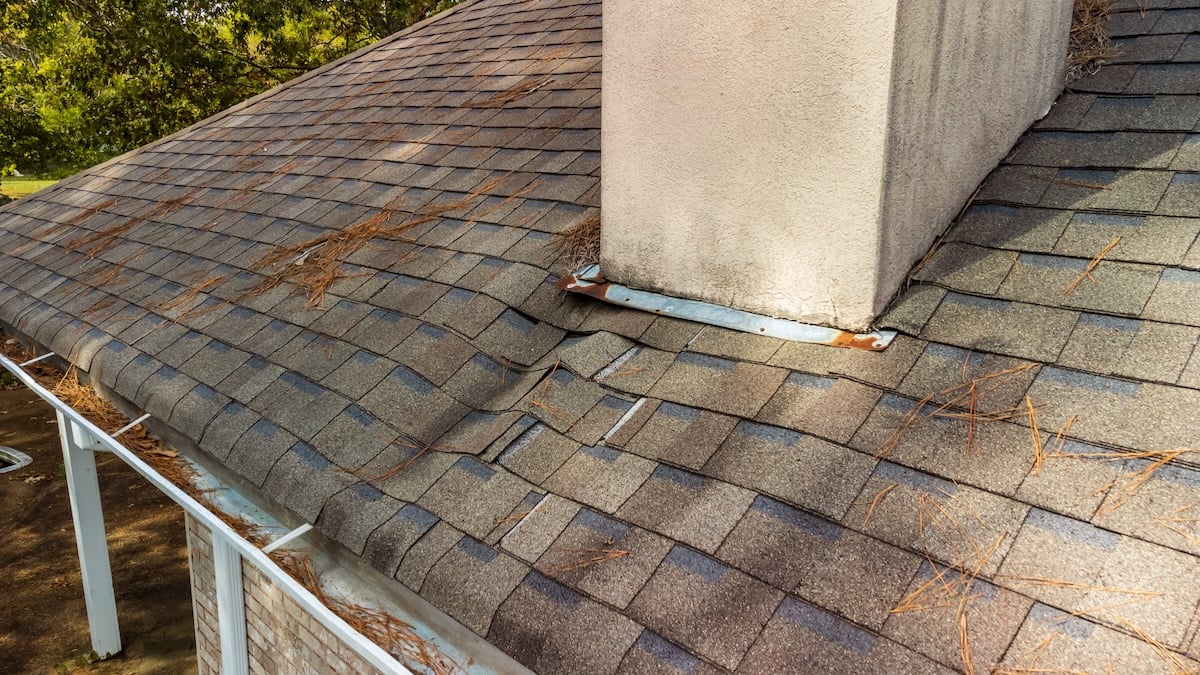
Sagging Roof? Here’s What It Means and What to Do
August 06,2025
6 minutes Read
A sagging roof is a clear sign that something has gone wrong with your home’s structural support—and it’s not something you should ignore. Whether the dip is subtle or severe, it could mean underlying water damage, framing issues, or roofing material failure.
- Roof sagging often signals serious structural or moisture problems
- Catching the issue early can prevent full roof collapse or costly damage
- Some fixes are straightforward, but others may require full reconstruction
In this guide, we’ll explain what causes a sagging roof, how to inspect it safely, and the best steps to take next.
💧 What Causes a Sagging Roof?
Roofs are designed to remain level and sturdy. If you notice dips or curves in the surface, something has likely shifted below the shingles. The most common culprits are related to age, moisture, structural issues, or excessive weight.
- Water damage: Persistent roof leaks can rot decking, weaken rafters, or warp framing.
- Old roofing materials: Aging shingles or underlayment can deteriorate, making the roof surface uneven.
- Poor attic ventilation: Without airflow, condensation builds up and slowly rots structural components.
- Overloading: Excessive snow, ice, or added roofing layers (like multiple asphalt shingle layers) can put too much weight on the structure.
- Improper construction: If the original framing or truss system was installed incorrectly, the roof may begin to sag prematurely.
⚠️ Warning Signs to Watch For
Not all sagging is dramatic. Some early signs are subtle, and many homeowners miss them until the damage becomes severe. Keep an eye out for these key indicators:

- Visible dips in the roofline: Step back from your home and look at the roof from different angles to spot wavy or sunken sections.
- Cracks in interior ceilings or walls: Movement in the roof structure often leads to drywall cracks inside your home.
- Water stains or sagging ceilings: Interior water damage suggests roof leaks that may be weakening the deck.
- Shingle buckling or wrinkling: Uneven roofing material often accompanies sagging wood underneath.
- Doors and windows sticking: Structural shifts caused by a sagging roof can put pressure on your home’s framing.
🔍 How to Safely Inspect a Sagging Roof
If you suspect your roof is sagging, it’s important to inspect the issue without putting yourself at risk. Avoid walking on the roof until a professional has assessed it.
- Do a ground-level visual check: Walk around your home and look for uneven rooflines or areas that appear lower than the rest.
- Check the attic for damage: Use a flashlight to examine rafters, trusses, and roof decking. Look for signs of bowing, water stains, or mold.
- Look for moisture or leaks: Any wet insulation, dripping nails, or discoloration in the attic can point to long-term water infiltration.
If you feel unsure or unsafe during your inspection, it’s best to call a professional for a thorough evaluation.
🤔 Can a Sagging Roof Be Repaired?
Yes—but the repair depends on what caused the problem in the first place. Not all sagging roofs require full replacement, but most will need structural reinforcement, framing correction, or roofing system repairs. In many cases, a professional roofer can assess the severity and recommend a custom solution based on your home’s age, roof type, and extent of damage.
Prompt action is key. The longer a sagging area is left untreated, the more strain it puts on the surrounding structure, and the more expensive the fix becomes. Here’s what repair might involve, depending on the cause:
Minor Sagging from Water Damage
If the sagging is isolated and caught early, you may only need to replace a section of sheathing or reinforce a few rafters. This is typically the case when leaks or small areas of rot have weakened the deck but haven’t spread.
- Remove damaged materials: Rotten decking, wet insulation, or soft wood must be safely removed before new materials are installed.
- Address the leak: Repair flashing, shingles, or valleys that allowed moisture to enter in the first place to prevent recurring damage.
- Reinforce the structure: Sistering rafters (adding a new board alongside a damaged one) or installing support beams can strengthen compromised sections.
Major Structural Damage
If the framing is severely compromised or multiple areas are sagging, more invasive repairs may be needed. These repairs often involve engineering input and a larger investment—but they can restore full structural integrity and safety.
- Engineer evaluation: A structural engineer may be required to assess load-bearing capacity and design a safe, code-compliant repair plan.
- Framing repair or replacement: Damaged trusses, joists, or beams may need to be replaced or reconstructed depending on the extent of the failure.
- Full roof replacement: In cases where sagging is widespread or the entire roof system is outdated, rebuilding the roof from the framing up may be the most cost-effective and lasting option.

📋 5 Steps to Take If You Have a Sagging Roof
Here’s a quick action plan if you suspect or confirm sagging:
- Stop walking on the roof: Additional weight can worsen the sag or cause collapse.
- Inspect from a safe location: Check from the ground and inside the attic without disturbing the structure.
- Call a professional roofer: Have a licensed roofing contractor assess the condition and identify the root cause.
- Get multiple repair quotes: Compare recommendations to understand the repair scope and costs.
- Schedule timely repairs: Don’t wait—delayed fixes can lead to worsening damage or even structural failure.
✅ Preventing Future Sagging
The best way to avoid a sagging roof is to maintain your roofing system and stay alert to early warning signs.
- Schedule regular roof inspections: A once-a-year check by a pro can catch small issues before they worsen.
- Clean gutters and downspouts: Clogged gutters lead to standing water that can seep under shingles and rot sheathing.
- Watch for leaks and stains: Water damage is often the first warning sign of sagging.
- Ensure attic ventilation: Balanced airflow helps prevent condensation that damages framing.
- Don’t overload the roof: Avoid adding heavy materials or failing to remove snow accumulation during winter.

🤝 Heartland Has Your Back When Roofs Sag
A sagging roof isn’t just a cosmetic issue—it’s often a red flag for something serious. Whether the cause is water damage, structural problems, or old materials, the sooner you act, the better your chances of a successful repair.
At Heartland, we specialize in diagnosing and fixing roofing issues from top to bottom. If your roof is showing signs of sagging, contact us today for a professional inspection and repair estimate. We’ll help restore your roof’s strength and your peace of mind.

Get Started Today!
From roofing to siding, Heartland Roofing is the team you need to take your home exterior to the next level. All you need to do is reach out! Fill out our contact form or give us a call to get the reliable help that you need.
4.7 rating
94% recommend
A+ rating